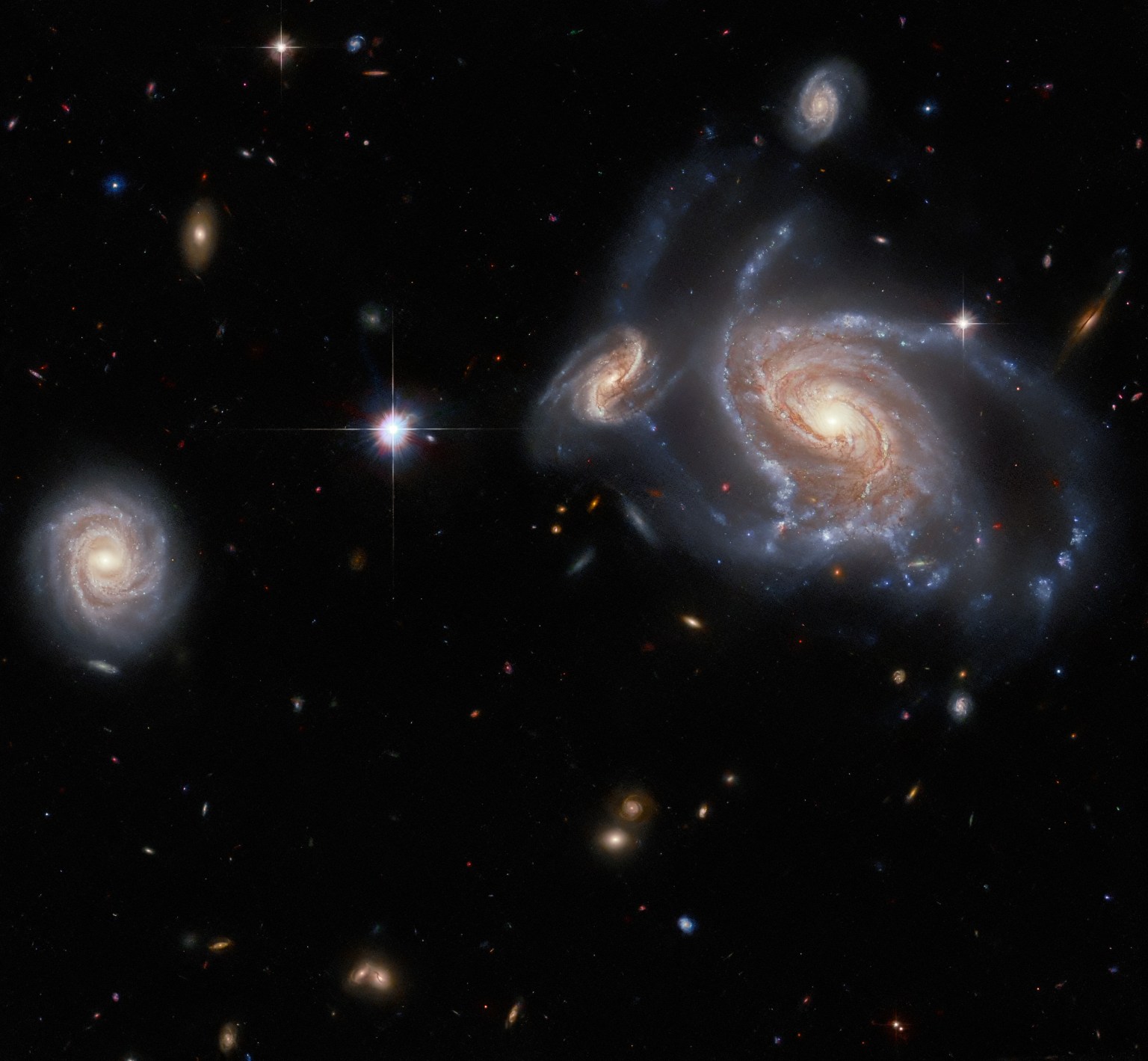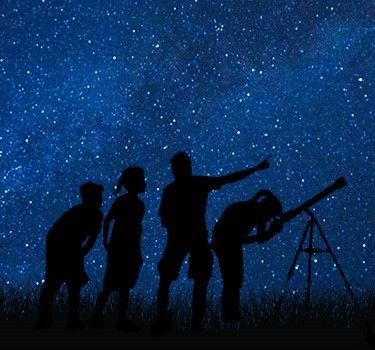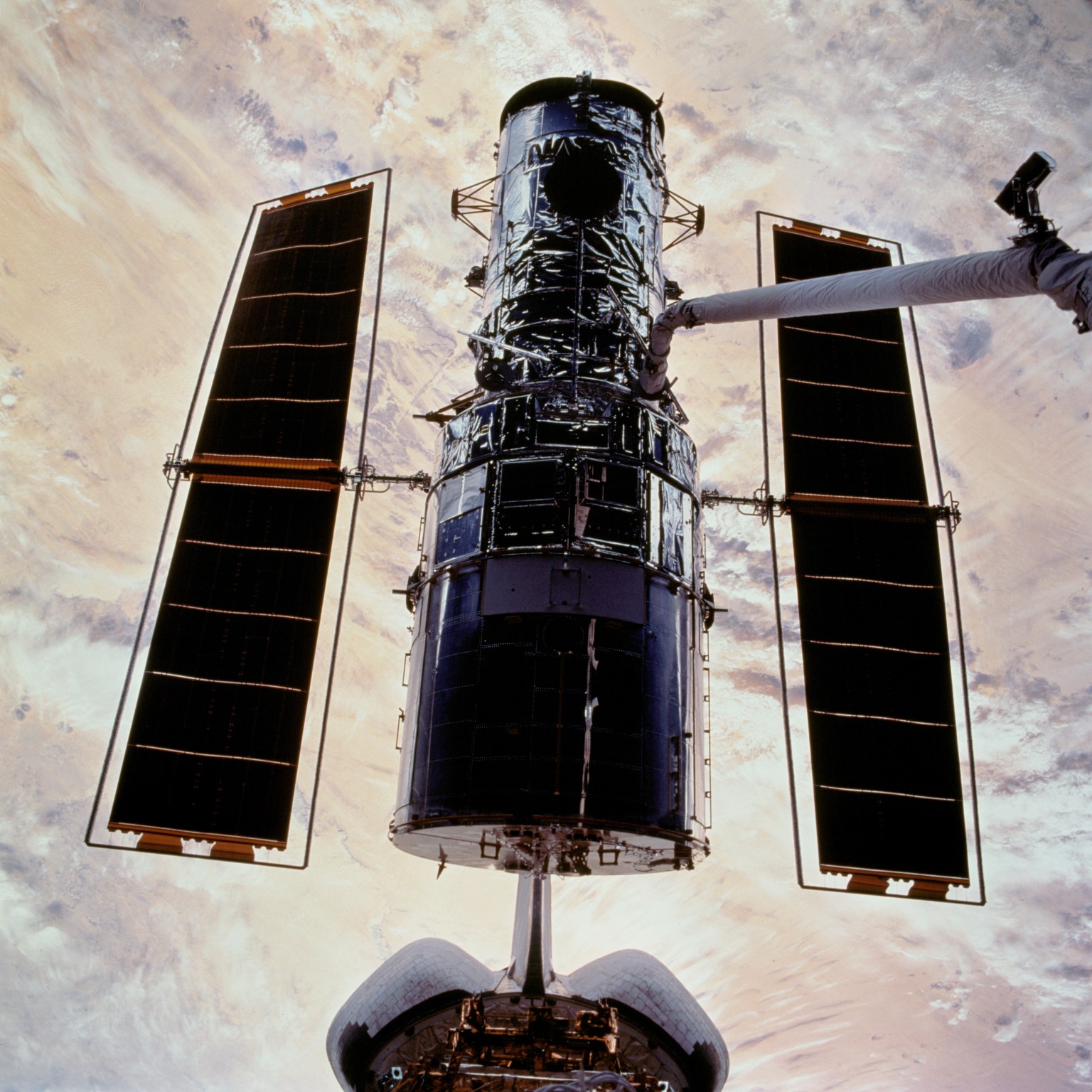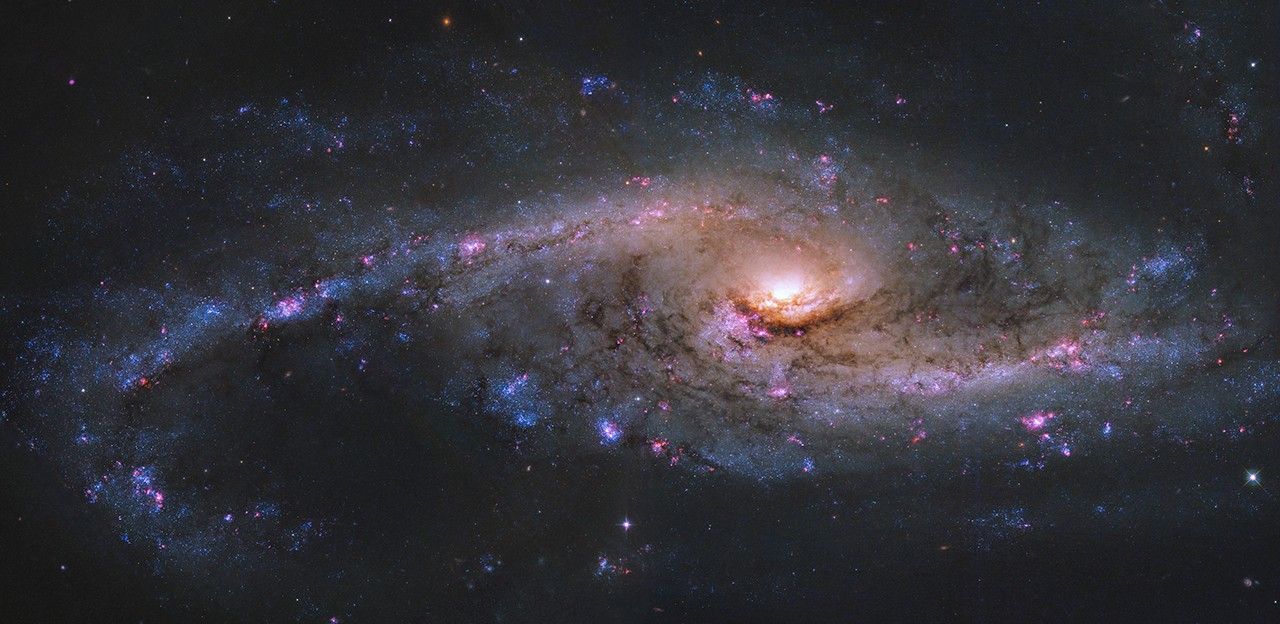Explore Hubble Hubble Home Overview About Hubble The History of Hubble Hubble Timeline Why Have a Telescope in Space? Hubble by the Numbers At the Museum FAQs Impact & Benefits Hubble’s Impact & Benefits Science Impacts Cultural Impact Technology Benefits Impact on Human Spaceflight Astro Community Impacts Science Hubble Science Science Themes Science Highlights Science Behind Discoveries Hubble’s Partners in Science Universe Uncovered Explore the Night Sky Observatory Hubble Observatory Hubble Design Mission Operations Missions to Hubble Hubble vs Webb Team Hubble Team Career Aspirations Hubble Astronauts News Hubble News Hubble News Archive Social Media Media Resources Multimedia Multimedia Images Videos Sonifications Podcasts e-Books Online Activities Lithographs Fact Sheets Posters Hubble on the NASA App Glossary More 35th Anniversary Online Activities 2 min read
Hubble Spies a Spectacular Starburst Galaxy 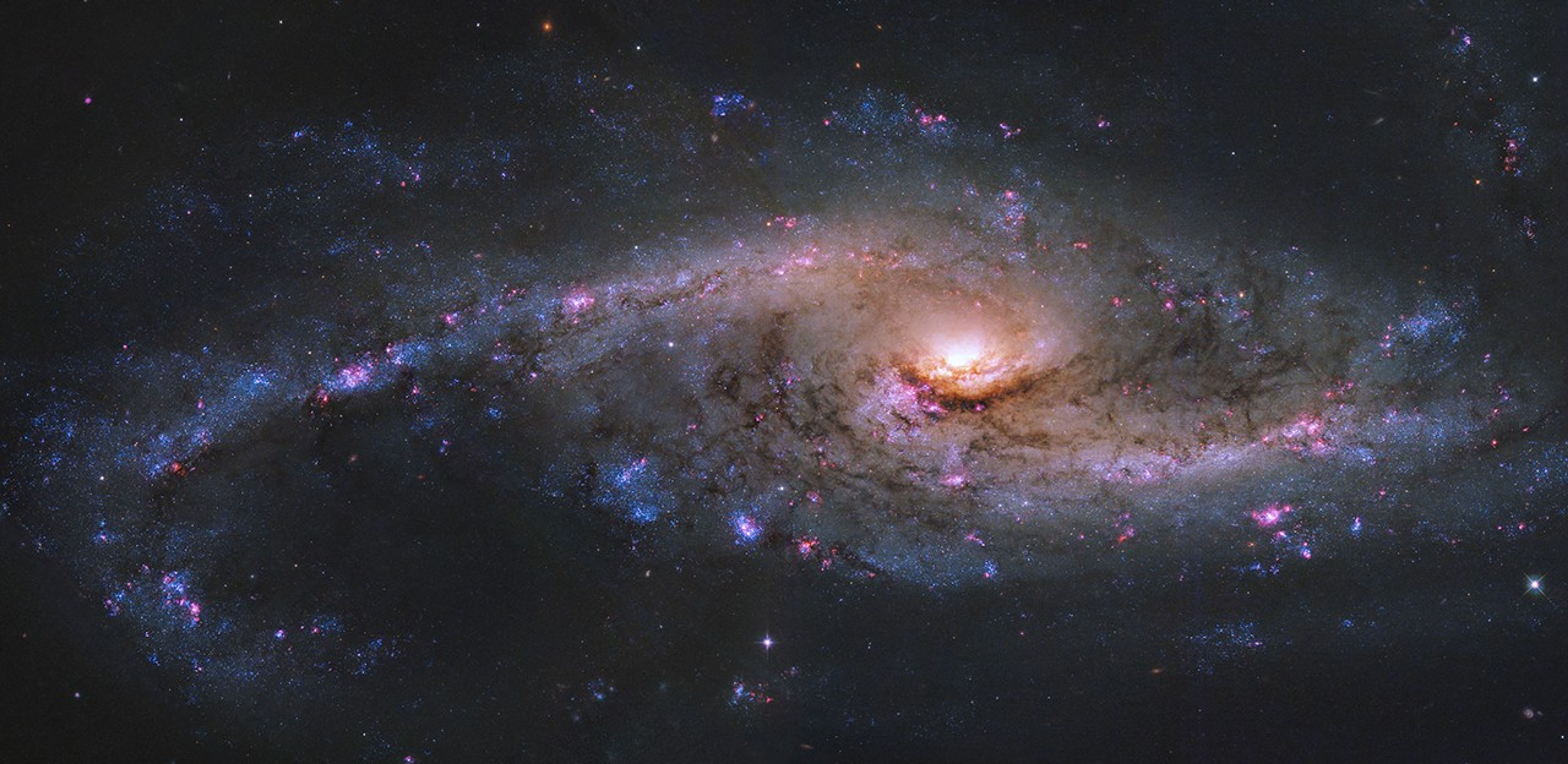 Starburst spiral NGC 4536 is bright with blue clusters of star formation and pink clumps of ionized hydrogen. NASA, ESA, and J. Lee (Space Telescope Science Institute); Processing: Gladys Kober (NASA/Catholic University of America) Sweeping spiral arms extend from NGC 4536, littered with bright blue clusters of star formation and red clumps of hydrogen gas shining among dark lanes of dust. The galaxy’s shape may seem a little unusual, and that’s because it’s what’s known as an “intermediate galaxy”: not quite a barred spiral, but not exactly an unbarred spiral, either ― a hybrid of the two.
Starburst spiral NGC 4536 is bright with blue clusters of star formation and pink clumps of ionized hydrogen. NASA, ESA, and J. Lee (Space Telescope Science Institute); Processing: Gladys Kober (NASA/Catholic University of America) Sweeping spiral arms extend from NGC 4536, littered with bright blue clusters of star formation and red clumps of hydrogen gas shining among dark lanes of dust. The galaxy’s shape may seem a little unusual, and that’s because it’s what’s known as an “intermediate galaxy”: not quite a barred spiral, but not exactly an unbarred spiral, either ― a hybrid of the two.
NGC 4536 is also a starburst galaxy, in which star formation is happening at a tremendous rate that uses up the gas in the galaxy relatively quickly, by galactic standards. Starburst galaxies can happen due to gravitational interactions with other galaxies or ― as seems to be the case for NGC 4536 ― when gas is packed into a small region. The bar-like structure of NGC 4536 may be driving gas inwards toward the nucleus, giving rise to a crescendo of star formation in a ring around the nucleus. Starburst galaxies birth lots of hot blue stars that burn fast and die quickly in explosions that unleash intense ultraviolet light (visible in blue), turning their surroundings into glowing clouds of ionized hydrogen, called HII regions (visible in red).
NGC 4536 is approximately 50 million light-years away in the constellation Virgo. It was discovered in 1784 by astronomer William Herschel. Hubble took this image of NGC 4536 as part of a project to study galactic environments to understand connections between young stars and cold gas, particularly star clusters and molecular clouds, throughout the local universe.
Explore More
Hubble’s Galaxies
Hubble Focus E-Book: Galaxies through Space and Time
Facebook logo @NASAHubble @NASAHubble Instagram logo @NASAHubble Media Contact:
Claire Andreoli
NASA’s Goddard Space Flight Center, Greenbelt, MD
claire.andreoli@nasa.gov
Details Last Updated Mar 08, 2025 Location NASA Goddard Space Flight Center Related Terms Hubble Space Telescope Astrophysics Astrophysics Division Galaxies Goddard Space Flight Center Spiral Galaxies The Universe
Keep Exploring Discover More Topics From Hubble Hubble Space Telescope
Since its 1990 launch, the Hubble Space Telescope has changed our fundamental understanding of the universe.

